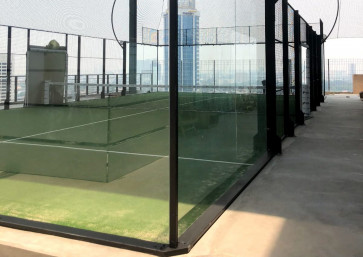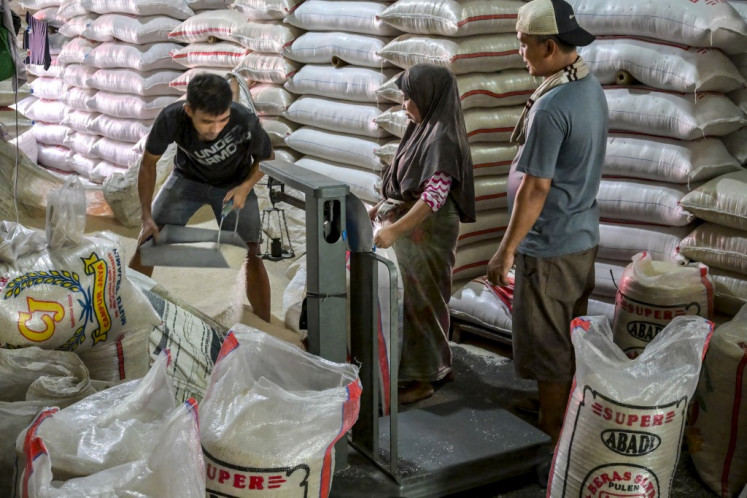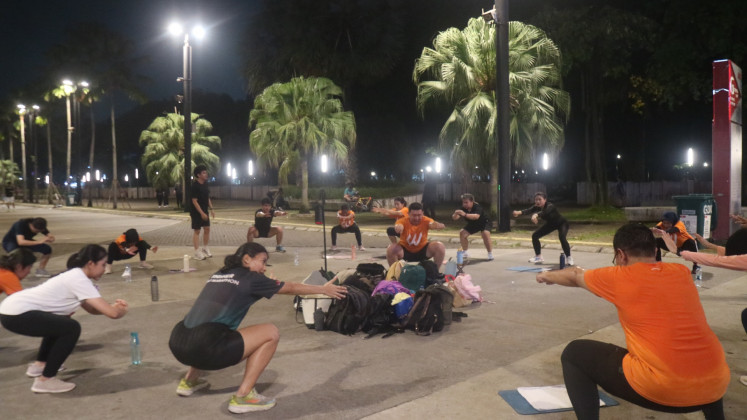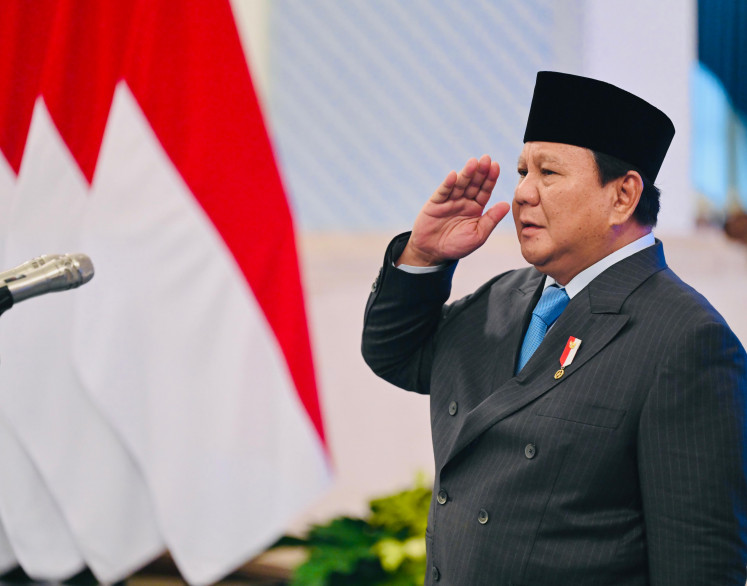Popular Reads
Top Results
Can't find what you're looking for?
View all search resultsPopular Reads
Top Results
Can't find what you're looking for?
View all search resultsNational flag carriers the ambassadors to introduce cultural treasures
Pride on the line: Garuda Indonesia flight attendants wear batik-detailed attire created by noted textile expert Josephine Komara, better known as Obin
Change text size
Gift Premium Articles
to Anyone
P
span class="caption" style="width: 558px;">Pride on the line: Garuda Indonesia flight attendants wear batik-detailed attire created by noted textile expert Josephine Komara, better known as Obin. From crew uniforms to traditional dishes on the menu, the national flag carrier is showcasing Indonesia in its in-flight experience. (JP/P.J. Leo)
Many foreign visitors’ first encounter with a new nation does not come at the immigration arrival gate, or upon hotel check-in. If they are flying the national airlines of their destination, then their first impression is made at 35,000 feet.
Some savvy airlines realize that they can be the gateway to introducing tourists — their “captive audience” in the skies — to their land and its culture. Asian airlines in particular have been adept at marketing an exotic travel experience.
National flag carriers can in a sense rally around the flag of their homeland to promote its attractions.
Singapore Airlines has marketed its hugely successful “Singapore Girl” campaign for the past 40 years, promising visitors gentle and efficient service by flights attendants clad in kebaya and sarong (designed by Parisian couturier Pierre Balmain).
Malaysia Airlines and Thai Airways also put a priority on gentle and hospitable service in their advertising campaigns.
Other airlines believe that the best way to a passenger’s cultural heart is through his or her stomach with a genuine taste of local cusine. Qatar Airways has collaborated with award-winning chef Ramzi from Lebanon to create five-star Middle East dishes suited to long-haul flights.
In August, Hong Kong-based Cathay Pacific introduced local specialties — from wok-fried chicken to curried prawns — that showcase local cooking styles, ingredients, taste and appearance on its in-flight menu. In business class, rice is served in a traditional rice bowl while in premium economy class, the main hot entrée is presented in a china serving dish.
“As the home carrier of Hong Kong, Cathay Pacific not only provides premium services to passengers but also takes great pride in promoting the best elements of local Chinese cuisine to travelers from Hong Kong and around the world,” Philippe de Gentile-Williams, the airline’s director for service delivery, said on its website.
National flag carrier Garuda Indonesia, which has enjoyed a remarkable image turnaround in the past five years, is also promoting local culture on board by showing the best of Indonesian hospitality and heritage.
“When flying with Garuda passengers will feel they have already arrived in Indonesia. And for Indonesians, they will feel at home while flying,” explained Garuda marketing manager Elisa Lumbantoruan.
“Our warm stewardesses reflect true Indonesian hospitality by serving passengers with heart. Today, many airlines offer good services but unfortunately their stewardesses are very robotic.”
The “Garuda Experience” begins as soon as passengers set foot in the plane; they are welcomed with traditional instrumental music arranged by noted conductor Addie MS. Before takeoff, flight attendants hand out hot towels scented with aromatic herbs and flowers.
Uniforms also emphasize tradition, in contrast to the utilitarian modern orange-colored uniforms of the 1970s and 1980s. Flight attendants wear a kebaya-inspired uniform consisting of a blouse and a batik wrap skirt, designed by pioneering fabric-maker Josephine “Obin” Komara and debuted in 2010.
Obin said she emphasized an Indonesian silhouette to allow passengers to experience local culture before they arrived in the nation. The colors of orange, blue and aquamarine green pay homage to Garuda’s old and new logo colors, and also suit Indonesian complexions, she said.
She chose batik to identify its Indonesian origins to the world; the motif is parang gondosuli from Central Java, with the skirt pattern redrawn to include the mythical bird Garuda.
“The motif is very elegant and when people look at it for the first time, they instantly know that it’s from Indonesia,” she explained.
Local flavor
Tastes of Indonesian culture are of course part of the in-flight menu.
Among the beverages is “martebe” juice, a mix of passion fruit and terong belanda juices. Business class passengers have the choice of a rijstaffel buffet of rice with rendang (West Sumatran beef stew), Padang-style satay, fried chili sauce, sweet fried tempeh or nasi rames (rice and accompaniments).
In economy class, local dishes are also offered, from opor ayam to nasi goreng (fried rice).
“The concept is to serve the flavors of Indonesia. And we are choosing these dishes because people are familiar with them and they are easy to produce in large quantities,” said the airline’s in-flight menu adviser William Wongso, a distinguished culinary expert and restaurateur.
“We also maintain the authenticity of their flavors but make them less hot than usual.”
For the long-haul Jakarta-Amsterdam route, William said the serving of local dishes would be a nostalgic journey for Indonesians living in the Netherlands, or for the Dutch due to the nation’s colonial history in the onetime Dutch East Indies.
“And the same goes for Indonesians who do not like western foods because they can still eat local foods while flying.”
Public relations executive Victor Davis is a fan of the airline.
“The ‘Indonesian experiences’ that stood out the most, in my opinion, were the authentic cuisine they served such as nasi goreng and siomay Bandung, and the attendants’ uniforms, which strongly represent Indonesia with the trademark batik motifs,” the 24-year-old said.
Garuda offers Indonesian movies and music on its in-flight entertainment, and sells local snacks, handicrafts, shirts and scarves in the in-flight shop.
“Batik shirts and scarves are favored among tourists from Japan, Korea, China, Australia and Europe. In the near future, we want to apply a mail order system, so that passengers can buy heavy products and we will send them to their home addresses,” Elisa said.
Returning to its Indonesian roots has worked wonders in the recent resurgence of the airline, founded in December 1949. Airline industry research body Skytrax chose Garuda Indonesia as “the best regional airline in Asia” at its 2012 awards, and it also finished eighth for the best cabin service in the world.










